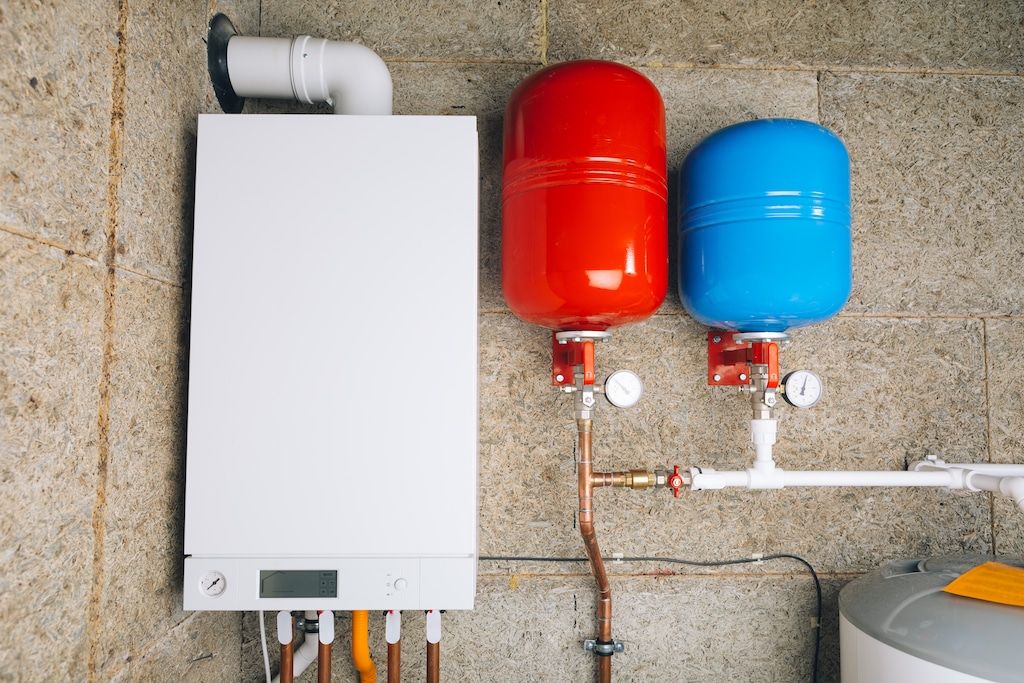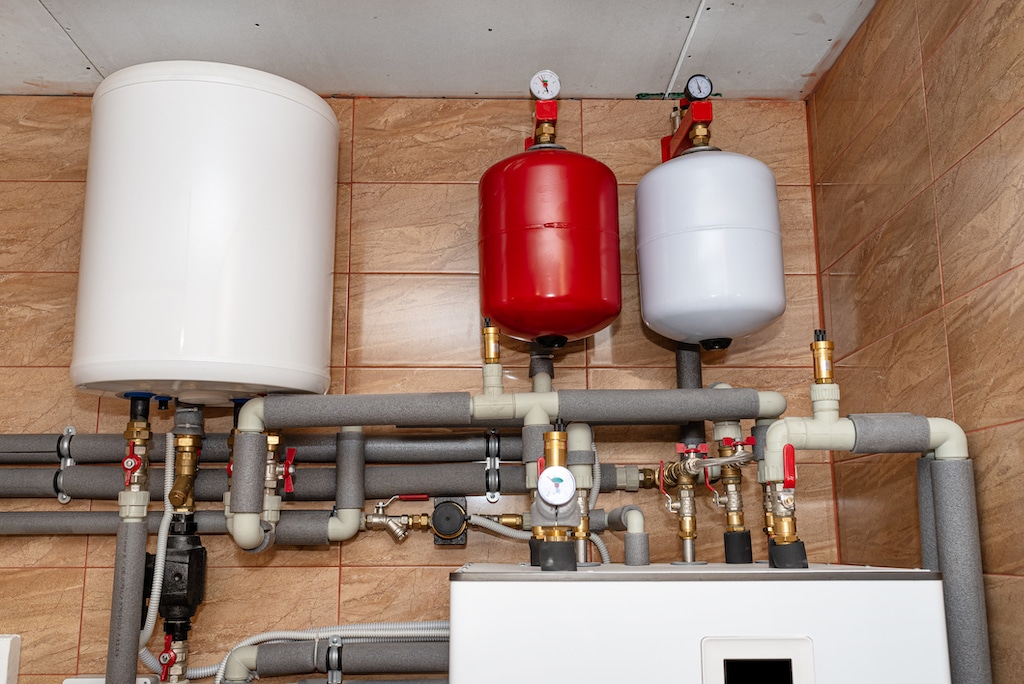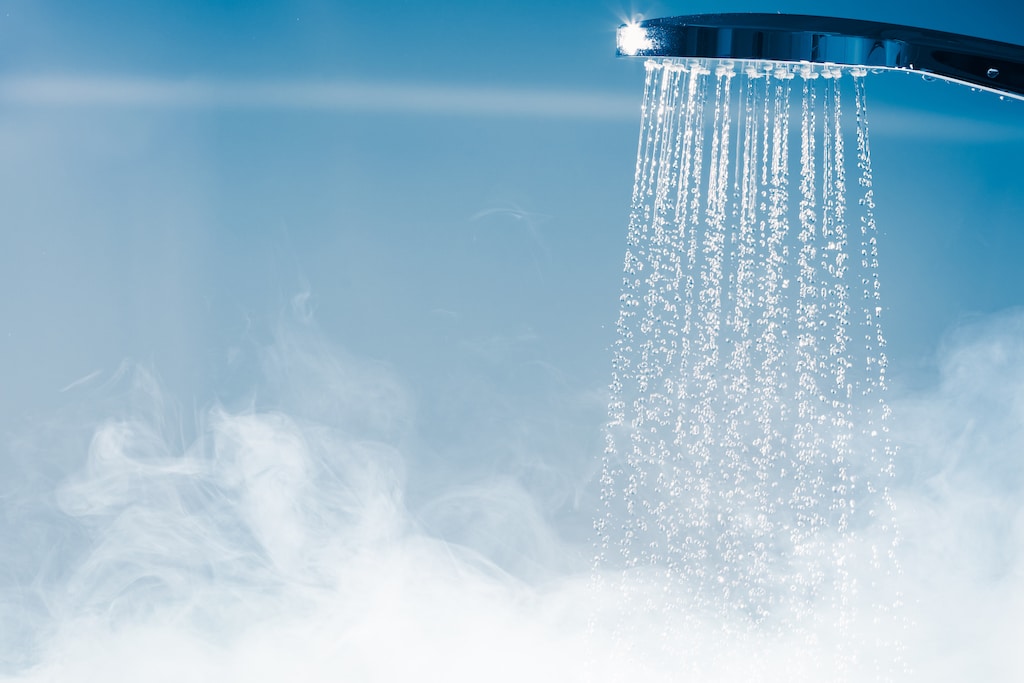
Expansion Tanks for Water Heaters: A Must-Read Guide
Have you ever wondered why your water heater needs an expansion tank?
If you’re a homeowner, understanding the intricacies of your home’s plumbing system can be a game-changer, especially when it comes to efficiency and preventing potential issues.
In this article, we’ll dive deep into the world of expansion tanks for water heaters, explaining their purpose, benefits, and how they can save you from unexpected plumbing woes.
We’ll explore the mechanics behind expansion tanks, why they’re essential for your water heater, and how they contribute to the overall health of your plumbing system.
From installation tips to maintenance advice, this article is your go-to resource for all things related to expansion tanks for water heaters.
What is an Expansion Tank for Water Heater?
Expansion tanks for water heaters are critical components designed to handle the natural expansion of water as it heats up within your water heater. This process is a fundamental physical principle: as water heats, it expands.
Without a proper outlet for this expansion, the pressure inside your water heater and plumbing system can increase to dangerous levels, potentially leading to system failure or even property damage.
The expansion tank serves as a safety net, providing a space where the excess water can go, thus relieving pressure on your water heater and the entire plumbing system.
It’s a small tank divided internally by a diaphragm – one side is filled with air and the other with water from your plumbing system.
As the water expands, it pushes into the tank, compressing the air on the other side. This action balances the pressure inside the system, preventing the potential for leaks or bursts in your water heater or plumbing lines.
Installing an expansion tank on your water heater is not just about adhering to building codes; it’s about ensuring the longevity and efficiency of your plumbing system. It protects the water heater, enhances its performance, and can extend its lifespan by preventing constant pressure fluctuations and the resultant wear and tear.
Moreover, the presence of an expansion tank can be a requirement for maintaining the warranty on your water heater. Manufacturers often stipulate that a failure to install such a tank can void the warranty, leaving you without coverage should the unit fail.
Expansion tanks for water heaters are just an optional add-on; it’s an essential component that plays a crucial role in maintaining the safety, efficiency, and reliability of your home’s hot water system.
Whether you’re installing a new water heater or looking to upgrade your existing system, considering the addition of an expansion tank is a wise investment in the longevity and performance of your home’s plumbing infrastructure.
Photo By Kinek00 at iStock
Why You Need Expansion Tanks For Water Heaters
Understanding Thermal Expansion
When water is heated, it expands. This is a basic physical principle known as thermal expansion.
In a closed plumbing system, this expansion creates additional pressure. Without a way to accommodate this increased volume, the pressure can build up within your water heater and the connected plumbing lines.
Over time, this pressure can lead to the failure of water heater components, leaky pipes, or even catastrophic system breakdowns.
The Role of an Expansion Tank
Expansion tanks for water heaters, specifically designed for water heaters, serve as a crucial safeguard against the dangers of thermal expansion.
It provides a designated space for the excess water to flow into, thereby relieving pressure in the water heater and its associated plumbing. This tank is divided into two chambers by a diaphragm: one side holds air, and the other side is connected to the plumbing system and fills with water.
As the water expands, it pushes into the tank, compressing the air in the adjacent chamber. This action counteracts the pressure increase in the system, stabilizing it and preventing potential damage.
Longevity and Efficiency
By mitigating the pressure caused by thermal expansion, an expansion tank extends the life of your water heater and plumbing fixtures.
It prevents the stress and strain that can lead to leaks, cracks, and other failures, thereby ensuring that your system operates efficiently for a longer period. This not only saves you from potential repair and replacement costs but also contributes to the consistent performance of your water heating system.
Compliance and Protection
In many regions, building codes require the installation of an expansion tank for water heaters, especially in homes with a closed plumbing system. This is a testament to the critical role these tanks play in home safety and system integrity.
Moreover, the presence of an expansion tank is often a condition for maintaining the warranty on your water heater. Manufacturers recognize that the absence of an expansion tank can lead to premature system failure, which is why they often require one to uphold the warranty.
Expansion tanks for water heaters are not just an accessory but an essential component of your water heating system. It safeguards against the adverse effects of thermal expansion, enhances the longevity and efficiency of your system, and ensures compliance with building codes and warranty requirements.
Investing in an expansion tank is a proactive step towards maintaining a safe, efficient, and reliable plumbing system in your home.
Also read: DRAIN CLEANING SERVICE CAN MAKE YOUR HOME ENVIRONMENT HEALTHY
The Mechanics of an Expansion Tank
Expansion tanks for water heaters are ingeniously designed to accommodate the expanded volume of water as it heats up, ensuring that your plumbing system maintains a balanced pressure.
The tank is split into two compartments by a diaphragm, a flexible membrane that responds to pressure changes and maintains the separation of air and water within the tank.
Water Side and Air Side
On one side of the diaphragm is the water side, which is connected to your home’s plumbing system. This is where the expanded water enters the tank. The other side, known as the air side, is sealed and contains air that is pre-charged at a specific pressure.
The air side’s pressure is typically set according to the water pressure in your plumbing system to ensure optimal functionality.
The Role of the Diaphragm
As the water heater operates and the water within your system heats and expands, the increased volume of water pushes into the expansion tank. This action causes the diaphragm to flex, compressing the air in the air side chamber.
The compression of this air absorbs the excess pressure, preventing it from stressing the plumbing system and the water heater.
Pressure Equilibrium and System Protection
The primary function of the expansion tanks for water heaters are to maintain a pressure equilibrium within your water heating system.
By providing a space for excess water to go, it prevents the pressure from escalating to a point where it could cause damage. This balance is crucial for the longevity and efficiency of your water heater and the integrity of your plumbing system.
Preventing Damage and Enhancing Safety
Without expansion tanks for water heaters, the increased pressure could lead to leaks, ruptured pipes, or even a catastrophic failure of the water heater itself.
By absorbing the excess pressure, the expansion tank acts as a protective barrier, safeguarding your home from potential water damage and enhancing the overall safety of your water heating system.
The expansion tanks for water heaters play a vital role in your home’s plumbing system by managing the pressure caused by thermal expansion.
Its design and functionality ensure that your water heater operates within safe pressure limits, protecting the system from damage and contributing to its efficiency and longevity. Understanding how an expansion tank works can help homeowners appreciate the importance of this component and ensure it is properly maintained for the health of their plumbing system.
Proper Installation of Expansion Tanks For Water Heaters
The installation of an expansion tank is a critical step in ensuring the efficiency and longevity of your water heating system.
It’s typically mounted on the cold water supply line that feeds into the water heater, a strategic position that allows it to effectively manage the pressure caused by thermal expansion.
Choosing the Right Location
The ideal location for an expansion tank is on the cold water supply line, close to the water heater but not on the hot water outlet. This placement ensures that the tank can effectively absorb the increased pressure from the heated water.
It’s also important to install the tank in a way that it’s supported properly to prevent stress on the plumbing connections.
Professional Installation
While some homeowners may feel comfortable installing an expansion tank themselves, it’s often recommended to have it installed by a professional expansion tanks for water heaters plumber.
Expansion tanks for water heaters professionals can ensure that the tank is properly sized for your water heater, correctly pressurized, and securely installed, which are all crucial factors for its effective operation.
Regular Maintenance Checks
To ensure that your expansion tank continues to function effectively, regular maintenance is essential. These checks can help identify any potential issues before they become serious problems, ensuring the longevity of your water heater and plumbing system.
Checking the Pressure
One of the key maintenance tasks is to check the air pressure in the expansion tank. This should be done annually using a standard tire pressure gauge.
The pressure should match the water pressure in your home’s plumbing system, which is typically around 50-60 psi, but this can vary depending on your specific system.
Inspecting for Leaks and Damage
During your regular maintenance checks, inspect the tank for any signs of leaks or damage. If the tank is waterlogged or has any visible damage, it may need to be replaced. A waterlogged tank can no longer effectively absorb excess pressure, putting your plumbing system at risk.
Professional Inspection
In addition to your own checks, having your expansion tank inspected by a professional expansion tanks for water heaters plumber during your annual plumbing system check-up can provide peace of mind.
They can assess the tank’s condition, check the pressure, and make any necessary adjustments to ensure it’s operating correctly.
The proper installation and regular maintenance of an expansion tank are crucial for its effective operation and the overall health of your water heating system.
By ensuring that your expansion tank is correctly installed and regularly maintained, you can protect your home from potential plumbing issues and extend the life of your water heater.
Also read: IS PROFESSIONAL DRAIN CLEANING SERVICE WORTH IT?
Recognizing the Need for Expansion Tanks For Water Heaters
Understanding the signs that indicate the need for an expansion tank can help you address potential issues in your plumbing system before they escalate.
Here are key indicators that suggest your water heater system might benefit from the installation of an expansion tank.
Fluctuating Water Pressure
One of the most noticeable signs that you might need an expansion tank is fluctuating water pressure throughout your home.
If you experience sudden changes in water pressure when using your faucets or shower, it could be a sign that your plumbing system is struggling to manage the pressure caused by thermal expansion. An expansion tank helps to stabilize this pressure, providing a more consistent water flow.
Frequent Leaks in the System
Regular occurrences of leaks, especially near the water heater or in your plumbing fixtures, can be a telltale sign of excessive pressure in your system. This overpressure can strain pipes and fixtures, leading to leaks.
Installing an expansion tank can alleviate this pressure, reducing the likelihood of leaks and the associated repair costs.
Constantly Running Pressure Relief Valve
The pressure relief valve on your water heater is designed to release water if the pressure or temperature gets too high, preventing the tank from exploding. If this valve is frequently releasing water or seems to be in constant operation, it’s a strong indicator that your system is experiencing excessive pressure.
An expansion tank can absorb this excess pressure and prevent the relief valve from triggering unnecessarily.
Addressing the Issue
If you’ve noticed any of these signs, it’s crucial to take action to prevent further damage to your plumbing system.
Consultation with a Professional
If you’re unsure whether you need an expansion tank, consulting with a plumbing professional can provide clarity. They can assess your system’s needs based on the symptoms you’re experiencing and recommend the best course of action.
Installation Benefits
Installing an expansion tank not only addresses the immediate symptoms of pressure fluctuations, leaks, and an overactive pressure relief valve but also contributes to the long-term health of your plumbing system.
It can prevent future issues, extend the lifespan of your water heater, and provide peace of mind knowing that your system is better equipped to handle thermal expansion.
recognizing the signs that indicate the need for an expansion tank is crucial for maintaining a healthy plumbing system.
By addressing these signs promptly and considering the installation of an expansion tank, you can enhance the efficiency, safety, and longevity of your water heating system.
How to Choose the Right Expansion Tank for Your Home
Selecting the correct expansion tank is not just about purchasing any tank; it’s about finding the one that aligns perfectly with your water heating system’s requirements.
Here’s how to ensure you choose the right one:
Size Matters
The size of the expansion tanks for water heaters are pivotal for its functionality. It should be proportional to the volume of water your heater holds and the pressure it operates under.
Volume Correlation
The capacity of your water heater directly influences the size of the expansion tanks for water heaters you need. A larger water heater will require a larger expansion tank to accommodate the increased amount of thermal expansion.
Pressure Considerations
The operating pressure of your water system also plays a crucial role. The expansion tanks for water heaters must be able to handle the pressure levels generated by your system to prevent overexpansion or underperformance.
Manufacturers often provide sizing charts or calculators that take into account your water heater’s capacity and your system’s pressure to recommend the appropriate tank size. Utilizing these tools can simplify the selection process and ensure accuracy.
Compatibility
The type of water heating system you have determines the kind of expansion tank you need. Compatibility is key to ensuring that the tank functions as intended and provides the necessary protection against pressure build-up.
System Type
Whether you have a conventional tank-based water heater or a modern tankless system, the expansion tank must be compatible. Some expansion tanks for water heaters are specifically designed for certain types of systems, so it’s important to choose accordingly.
Material Consideration
The materials used in your plumbing system can also influence the choice of expansion tank. Ensure that the tank is suitable for use with your system’s materials to avoid corrosion or degradation over time.
Expert Advice
While the above guidelines can help you make an informed decision, consulting with a plumbing professional can provide additional assurance. Expansion tanks for water heaters experts can assess your specific situation, consider all relevant factors, and recommend the most suitable expansion tank for your home.
Ensuring Effective Operation
Once you’ve selected the right expansion tank, proper installation and regular maintenance are crucial to its effective operation.
Ensuring that the tank is correctly sized and compatible with your system lays the foundation for maintaining a balanced and safe water heating system, ultimately protecting your home from potential pressure-related issues.
DIY vs. Professional Installation of Expansion Tanks
When it comes to installing expansion tanks for water heaters, homeowners often face the choice between a DIY approach and hiring a professional.
Understanding the nuances of both options can help you make an informed decision that aligns with your skills, budget, and the specific needs of your plumbing system.
DIY Installation
Pros:
- Cost Savings: Handling the installation yourself can save on labor costs, making it an attractive option for those who are handy and familiar with basic plumbing tasks.
- Flexibility: DIY installation allows you to work on your own schedule, without the need to coordinate with a professional’s availability.
- Learning Experience: Taking on the installation as a DIY project can provide valuable learning experiences, enhancing your understanding of your home’s plumbing system.
Cons:
- Risk of Errors: Without the expertise of a professional, there’s a higher risk of incorrect installation, which can lead to system inefficiencies or damage.
- Lack of Warranty: Some manufacturers may require professional expansion tanks for water heaters installation for the warranty to be valid, so a DIY approach might void this protection.
- Safety Concerns: Incorrect installation can pose safety risks, especially if the expansion tank is not properly secured or if there are issues with pressure settings.
Professional Installation
Pros:
- Expertise: Expansion tanks for water heaters professionals bring experience and knowledge, ensuring that the expansion tank is installed correctly and efficiently.
- Warranty and Compliance: Hiring a professional often ensures that the work is covered by a warranty and complies with local codes and regulations.
- Time-Saving: A professional can complete the installation quickly and effectively, saving you time and the hassle of figuring out the process yourself.
Cons:
- Cost: The primary drawback of professional installation is the cost, as you will need to pay for the expertise and labor of the plumber.
- Scheduling: You’ll need to schedule an appointment, which might not always align with your immediate availability or preference.
The choice between DIY and professional expansion tanks for water heaters installation of an expansion tank for a water heater depends on various factors, including your comfort level with plumbing tasks, budget constraints, and the importance of warranty and compliance.
While DIY can be cost-effective and rewarding, the expertise and peace of mind offered by professional installation are often worth the investment, especially for those who prioritize reliability and efficiency in their home’s plumbing system.
Essential Installation Tips for Expansion Tanks For Water Heaters
Proper expansion tanks for water heaters installation is crucial for the optimal performance of an expansion tank.
Here’s a detailed guide to ensure your expansion tanks for water heaters are installed correctly and functions as intended:
Adherence to Manufacturer Instructions
Guideline Compliance
Each expansion tank is unique, and manufacturers provide specific instructions tailored to each model. Following these guidelines is crucial for ensuring the tank functions correctly and efficiently.
Installation Steps
The instructions will detail the necessary steps for expansion tanks for water heaters installation, including where to place the tank in relation to the water heater and how to secure it properly. These steps are designed to optimize the tank’s performance and longevity.
Pre-charge Pressure Check
Pressure Alignment
Before installing expansion tanks for water heaters, it’s essential to check and adjust the pre-charge pressure to align with your home’s water pressure. This ensures that the tank can effectively absorb excess pressure without being overtaxed or underutilized.
Adjustment Process
Using a standard air pump, similar to those used for bicycle tires or sports balls, you can adjust the tank’s pressure. This adjustment is crucial for the tank to function correctly and should match the water pressure to ensure balance within the system.
Ensuring Proper Support
Weight Considerations
Expansion tanks for water heaters can become quite heavy when filled with water, especially larger models designed for extensive systems. Proper support is essential to prevent undue stress on the tank and the connected plumbing.
Mounting and Bracing
Secure mounting brackets or a platform can provide the necessary support for the tank. Ensuring that the expansion tanks for water heaters are firmly and securely installed will prevent movement and potential damage to the plumbing connections.
Additional Considerations
Accessibility:
Install expansion tanks for water heaters in a location where it can be easily accessed for maintenance and inspection. This accessibility will facilitate regular checks and adjustments, contributing to the system’s overall health and efficiency.
Professional Assistance
If you’re unsure about any aspect of the expansion tanks for water heaters installation process, consider hiring professional expansion tanks for water heaters plumbers. Their expertise can ensure that the expansion tank is installed correctly, providing peace of mind and ensuring the system’s reliability.
By following these detailed installation tips, you can ensure that your expansion tank is set up correctly, enhancing the efficiency and longevity of your water heating system.
Proper installation is a critical step in safeguarding your home’s plumbing infrastructure and ensuring consistent, reliable performance from your water heater.
Photo By nikkytok at iStock
Enhancing Your Home’s Water Heating System with Expansion Tanks For Water Heaters
Incorporating expansion tanks for water heaters into your home’s plumbing system is not just about adhering to building codes or following manufacturer recommendations; it’s about taking a proactive step towards ensuring the efficiency, safety, and longevity of your water heating system.
Let’s delve into how an expansion tank enhances your system, the environmental benefits, and the importance of understanding system compatibility.
System Enhancement with an Expansion Tank
Optimized Performance
Expansion tanks for water heaters play a pivotal role in maintaining the system’s pressure at optimal levels.
By doing so, it ensures that the water heater operates efficiently, reducing the energy required to maintain water temperatures and thereby enhancing the system’s overall performance.
Preventive Maintenance
The presence of an expansion tank helps in identifying potential issues in the water heating system before they escalate.
Regular checks on the expansion tank can reveal signs of system pressure fluctuations, prompting early intervention and preventing more significant problems down the line.
Long-Term Cost Savings
While the initial investment in an expansion tank and its installation might seem like an added expense, the long-term savings are substantial.
By mitigating the risks of pressure-related damages, the expansion tank reduces the need for frequent repairs or premature replacement of the water heater, offering significant cost savings over time.
Environmental Benefits
Energy Efficiency
By ensuring that the water heating system operates within the ideal pressure range, an expansion tank contributes to the system’s energy efficiency.
A more efficient system requires less energy to heat water, which translates to lower energy consumption and a reduced carbon footprint.
Resource Conservation
By extending the lifespan of the water heater and reducing the likelihood of leaks or bursts that can result in water wastage, expansion tanks for water heaters indirectly contribute to water and resource conservation, aligning with environmentally friendly practices.
Understanding System Compatibility
Compatibility with Various Systems
Whether you have a traditional tank-based water heater or a modern tankless system, it’s crucial to ensure that the expansion tank is compatible with your specific setup. This compatibility ensures that the tank functions as intended, providing the necessary pressure relief and contributing to the system’s efficiency.
Expert Guidance
Consulting with a plumbing professional can provide insights into the most suitable expansion tank for your water heater, considering factors like system type, capacity, and local water pressure.
This expert guidance ensures that you choose an expansion tank that complements your system, enhancing its performance and longevity.
Incorporating an expansion tank for a water heater is a wise decision for any homeowner looking to optimize their water heating system’s performance, ensure its longevity, and contribute to environmental conservation.
By understanding the benefits and ensuring system compatibility, you can make an informed choice that enhances your home’s plumbing infrastructure and offers peace of mind.
Strategic Considerations for Expansion Tank Integration
When integrating an expansion tank for a water heater into your home’s plumbing system, strategic considerations are crucial to maximize its benefits.
This section explores the strategic placement, the role of expansion tanks in energy conservation, and their impact on system diagnostics.
Strategic Placement for Optimal Functionality
Location Efficiency
The placement of expansion tanks for water heaters are pivotal for its functionality. Ideally, it should be installed on the cold water supply line near the water heater to effectively manage the pressure caused by thermal expansion.
Strategic placement ensures that the tank can perform its pressure-regulating functions efficiently, contributing to the system’s overall health.
Accessibility for Maintenance:
Beyond just installation, the location of the expansion tank should consider ease of access for regular maintenance.
Ensuring that the tank is easily reachable facilitates routine inspections and adjustments, which are essential for the long-term efficacy of the tank and the system it supports.
Expansion Tanks and Energy Conservation
Mitigating Energy Loss:
An often-overlooked benefit of expansion tanks for water heaters are their role in energy conservation. By maintaining a consistent pressure level within the water heating system, the tank helps in preventing energy loss.
A system without pressure fluctuations doesn’t have to work as hard to maintain water temperature, leading to reduced energy consumption.
Sustainability Aspect
The energy conservation facilitated by an expansion tank aligns with sustainable living practices.
By reducing the energy demand of your water heating system, you’re contributing to a lower carbon footprint, making an expansion tank an eco-friendly addition to your home.
Impact on System Diagnostics
Early Warning System
An expansion tank for a water heater can serve as an early warning system for potential issues in your plumbing.
Unusual behaviors or changes in the tank’s performance can indicate underlying problems in the water heating system, allowing for early detection and intervention.
Facilitating System Analysis
By monitoring the pressure levels and the functional state of the expansion tank, homeowners and professionals can gain insights into the overall health of the water heating system. This makes the expansion tank a valuable tool in system diagnostics, aiding in the timely identification and resolution of issues.
Incorporating expansion tanks for water heaters into your water heating system is a strategic decision that extends beyond mere compliance with regulations.
It’s about enhancing the system’s efficiency, contributing to energy conservation, and leveraging the tank’s diagnostic potential to maintain a robust plumbing infrastructure.
By understanding these strategic considerations, homeowners can ensure that their expansion tank serves as a vital component in the optimal operation and sustainability of their water heating system.
Top 5 Best Practices for Expansion Tanks for Water Heaters
-
Understanding the Importance of Expansion Tanks
Expansion tanks play a crucial role in maintaining the health of your water heating system. They are designed to regulate water pressure, preventing potential damage to pipes, fittings, and the water heater itself.
By absorbing excess pressure, expansion tanks act as a protective buffer, enhancing the longevity and efficiency of your plumbing system.
Understanding this fundamental role can help homeowners appreciate the value of an expansion tank in their water heating setup.
-
Proper Installation
The effectiveness of an expansion tank is significantly influenced by its installation.
Key steps include identifying the optimal location, usually on the cold water supply line near the water heater, turning off the water supply, and properly installing the tee.
Connecting the expansion tank and ensuring the pressure gauge is accurately placed are also vital steps. Proper installation ensures that the expansion tank can perform its intended function, maintaining the system’s pressure at safe levels.
-
Maintenance and Inspection
To ensure expansion tanks for water heaters continue to function effectively, regular maintenance and inspection are essential.
Homeowners should look for any signs of damage or wear, such as leaks or corrosion. The bladder inside the tank, crucial for pressure absorption, should be checked to ensure it’s functioning correctly. Adjusting the tank’s pressure is also necessary to align with the system’s requirements, ensuring optimal performance and preventing system overpressure.
-
Choosing the Right Size
Selecting the appropriate size for your expansion tank is critical to its performance. The tank’s size should correlate with your water heater’s capacity and the overall pressure of your plumbing system.
A correctly sized expansion tank can efficiently handle the thermal expansion, maintaining a balanced and safe water heating system. This consideration prevents the risks associated with under or oversized tanks, which can lead to system failures or inefficiencies.
Consulting Professionals
When in doubt, seeking advice from professional plumbers can be invaluable. expansion tanks for water heaters professionals can provide insights into the correct size, installation procedures, and maintenance practices for expansion tanks.
Their expertise ensures that the expansion tank is suited to your system’s specific needs, offering peace of mind and ensuring the system’s longevity and reliability.
Consulting with professionals is particularly beneficial for homeowners unfamiliar with plumbing systems or those facing complex installation scenarios.
Photo By TrongNguyen at iStock
How Bluefrog Plumbing + Drain of North Dallas Can Assist with Your Expansion Tank Needs
Comprehensive Services in North Dallas
Bluefrog Plumbing + Drain of North Dallas stands out as a premier service provider for all your plumbing needs, including the installation, maintenance, and repair of expansion tanks for water heaters.
Serving various locations such as Denton, Irving, Carrollton, and Richardson, TX, they ensure top-tier service for homeowners, ensuring that your plumbing system remains in optimal condition.
Expert Installation and Maintenance
The team at Bluefrog Plumbing + Drain specializes in the precise installation of expansion tanks, ensuring they are perfectly suited to your home’s water heating system.
Their expertise is not limited to installation; they also provide comprehensive maintenance services.
Regular checks and adjustments are crucial for the longevity and efficiency of your expansion tank, and Bluefrog’s professionals are adept at ensuring your system operates flawlessly.
Tailored Solutions for Every Home
Understanding that every home’s plumbing system has unique requirements, Bluefrog Plumbing + Drain offers customized solutions.
Whether you’re installing a new expansion tank, replacing an old one, or seeking professional advice on the right size and type for your system, their experts are equipped to provide tailored recommendations and services that align with your specific needs.
Emergency Services and Customer Support
In case of any plumbing emergencies or urgent needs related to your expansion tanks for water heaters, Bluefrog Plumbing + Drain provides prompt and reliable services.
Their commitment to customer satisfaction is evident in their responsive support and the availability of emergency services, ensuring that you’re not left stranded with a malfunctioning system. You can reach out to them at 469-573-2535 for immediate assistance.
Trusted Reviews and Proven Expertise
Before making your decision, you can explore the experiences of other homeowners by checking the customer reviews for Bluefrog Plumbing + Drain.
Their reputation for quality work, professionalism, and customer satisfaction is well-documented, providing you with the confidence that your expansion tank and overall plumbing system are in capable hands.
If you’re in North Dallas and surrounding areas, Bluefrog Plumbing + Drain is your go-to source for all expansion tank needs. Their comprehensive services, tailored solutions, and commitment to customer satisfaction ensure that your water heating system remains efficient, safe, and reliable.
Conclusion
Understanding the critical role of expansion tanks for water heaters in your home’s plumbing system is essential for maintaining its efficiency and longevity. These tanks are pivotal in managing the pressure caused by thermal expansion, safeguarding your system against potential damage.
Proper installation, regular maintenance, and choosing the right size are key factors that contribute to the optimal functioning of your expansion tank.
For residents in North Dallas, including Denton, Irving, Carrollton, and Richardson, TX, bluefrog Plumbing + Drain offers expert services to address all your expansion tank needs.
Their professional team ensures that your system is equipped with the right expansion tank, providing installation, maintenance, and emergency services to keep your plumbing system in top-notch condition.
By leveraging the expertise of professionals like bluefrog Plumbing + Drain and adhering to the best practices in expansion tank maintenance and installation, homeowners can enjoy a seamless and efficient water heating system.
Remember, the right expansion tank not only contributes to the efficiency and safety of your water heater but also extends its lifespan, ensuring a steady supply of hot water while preventing costly repairs and replacements.
Photo By pearleye at iStock
FAQs About Expansion Tanks for Water Heaters
1.What is the primary function of an expansion tank for a water heater?
The primary function is to absorb excess pressure caused by the thermal expansion of water, protecting your plumbing system from potential damage.
2.How do I know if my water heater needs an expansion tank?
If you experience fluctuating water pressure, frequent leaks, or a constantly running pressure relief valve, it might be time to install an expansion tank.
3.Where should an expansion tank be installed?
It should be installed on the cold water supply line near the water heater for optimal performance.
4.Can I install an expansion tank myself?
While it’s possible for a DIY-savvy homeowner to install an expansion tank, it’s recommended to seek professional help to ensure proper installation and functionality.
5.How often should I check my expansion tank?
Regular inspections at least once a year are recommended to ensure it’s functioning correctly and maintaining the right pressure levels.
What are your thoughts on the importance of an expansion tank for your water heater?
Share your experiences or questions below!
Read our previous blog post.
Check out this tip!
Alan Soukup




















